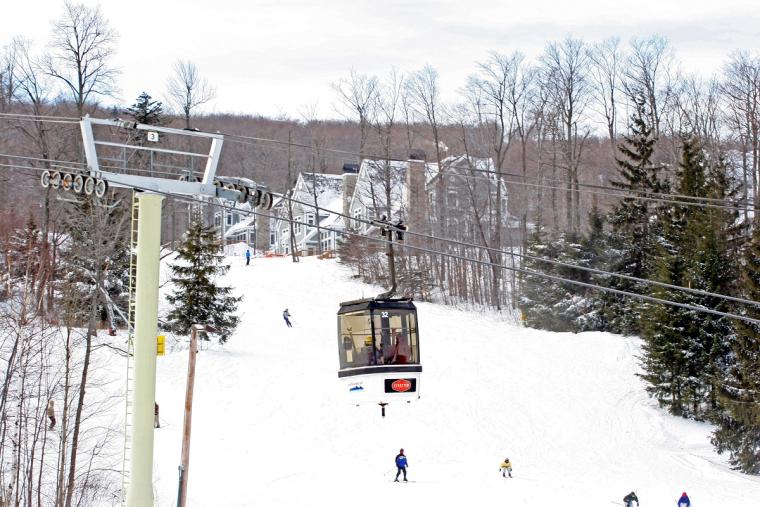
Winter sports event owners and rights holders, take note. As the holidays approach, ski season is getting underway with some major changes in place designed to better accommodate visitors.
“Major ski resorts across North America have plowed hundreds of millions of dollars into concrete, steel and padded seats in recent years, with 2022 ushering in a remarkable number of impressive new chairlifts and gondolas, The New York Times reports. “New lifts tend to be safer, faster, have greater capacity, and sometimes include luxuries such as heated seats and wind visors.
Palisades Tahoe in Olympic Valley, Calif., for example, now boasts a $65 million, eight-passenger Base to Base Gondola that spans 2.4 miles between the two ski areas previously known as Squaw Valley and Alpine Meadows — which at one time were only connected via shuttle bus. And at New Hampshire’s Waterville Valley Resort, a new high-speed chairlift will hold carry six skiers at one time and replace what The Times says was the state’s first high-speed lift.
“This will be the first detachable lift built in the United States by France’s MND Ropeways and will feature ergonomic seats from Porsche Design Studio, as well as a bubble that can be lowered over the chair to protect riders from New Hampshire’s winter winds,” the paper reports.
Meanwhile, the new Lakeview Express chairlift at Mount Rose Ski Resort in Reno, Nev., is the largest project in the resort’s history. According to the Mount Rose website, the high-speed detachable quad cuts six minutes off the previous ride time and can move up to 2,400 people per hour.
And new four-person chairlifts at two Ohio ski areas — Brandywine in Northfield and Boston Mills in Brecksville — are the first ones at either resort since 1986. “More uphill capacity, more time on the snow, less time in lines,” Jake Campbell, general manager at both resorts, plus Alpine Valley Ski Area in Munson Township, Ohio, told Cleveland.com. All three are owned by Vail Resorts.
These developments represent the snow industry’s current hot streak. According to the National Ski Areas Association (NSAA), 2021-22 was a record season for U.S. ski areas — with a total of 60.7 million skier visits. That was an increase of 3.5% over the previous season. Skiing and snowboarding rebounded in the wake of the pandemic and provided economic relief and thousands of jobs to communities across 37 ski states. Strong season pass sales and a continued desire for outdoor recreation were two of the primary contributing factors to last season’s record-breaking results, according to the NSAA. The number of operating ski areas also jumped from 462 during the 2020-21 season to 473 last season.
Strong skier numbers bode well for the long-term health of the sport, especially since participant numbers have been relatively flat over the past decade.
The boom might even be enough to resurrect the ski area at Denton Hill State Park in rural Pennsylvania’s Potter County.
“The 700-acre park … was one of the rare state Department of Conservation and Natural Resources properties that offered legitimate downhill skiing before the operation was shuttered in 2014,” The Philadelphia Inquirer recently reported. “Today, it’s a ghost town, or, rather, a ghost ski resort. The park’s gates remain open, but its five cabins, a hot commodity at any state park, are closed and only the occasional hardy soul willing to hike up the mountain can ski or snowboard down.”
But the DCNR has not given up on the site, and it is “actively seeking new concessionaires to fulfill its ‘Master Plan’ for a four seasons ‘adventure center’” that would be open year-round to skiers, snowboarders, hikers, mountain bikers and others, according to the paper.
 “With about $13 million in investments, including $10 million in capital improvements to support the existing infrastructure, we think we have the recipe for success going forward,” Wesley Robinson, a DCNR spokesperson, told the paper.
“With about $13 million in investments, including $10 million in capital improvements to support the existing infrastructure, we think we have the recipe for success going forward,” Wesley Robinson, a DCNR spokesperson, told the paper.
“It would be such a bonus to the county and the region for it to reopen, particularly for all four seasons,” added Paul Heimel, a Potter County commissioner. “The state has to decide how much skin it wants in the game. I’m fairly optimistic.”

